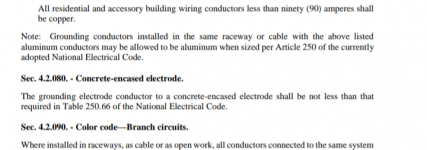tdebrum
Member
- Location
- Lakeville,MA.USA
- Occupation
- Retired power plant electrician,MA, Journeyman Electrician
Have any of you seen where someone ran a ufer ground up a concrete wall,rebar is in footer but turned up ,in this case up a 9' concrete wall,so you would connect to rebar sticking out top of wall and your ground connection would be at top of wall.
I have not seen this before but am told this is how it's done.
I have not seen this before but am told this is how it's done.


